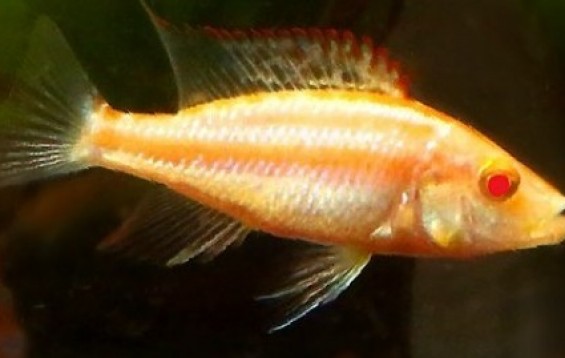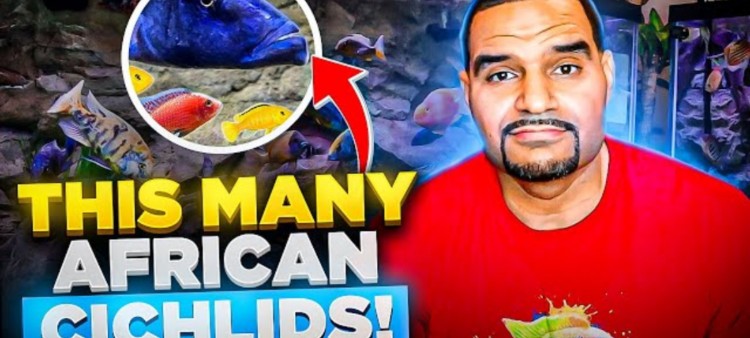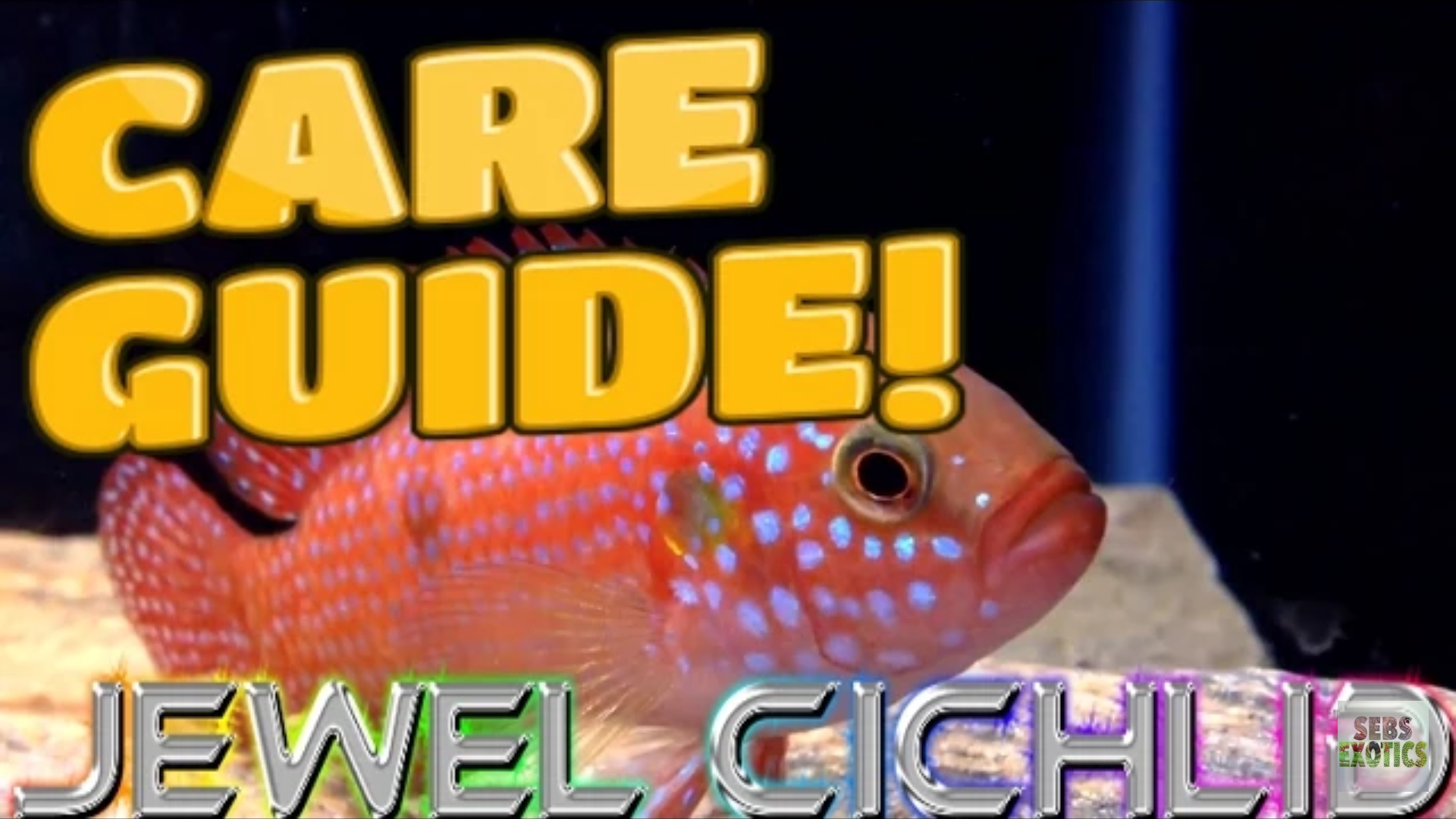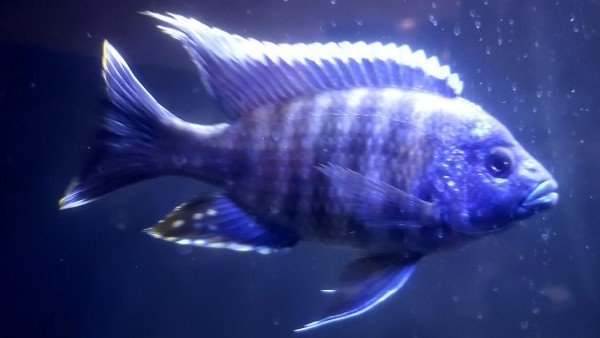- Name:
Albino Compressiceps Cichlid
(View AKA's) - Family: Cichlidae
- Species: African Cichlids
- Scientific Name: Dimidiochromis compressiceps


General info about Albino Compressiceps Cichlid
The average adult is 10 inches and has a lifespan of 8 years. However, they can become larger and live longer in an aquarium. This species has a compressed body and a large mouth its jaw is one-third of the total body length. It has a silver coloration with a dark stripe that goes from the snout to the tail which helps the fish camouflage. Sexually mature males are blue with bright red and orange fins. It is a predatory species that due to its thin, compressed body can move with great bursts of speed that together with its ability to camouflage in the vegetation, helps it ambush its preys. It is the only known predator to eat the prey’s tail first. Some fishermen have seen it eat the eyes of other fish, hence its common name, however, it is unlikely to see this behavior in an aquarium.
To be kept in captivity, these fish need water temperatures ranging from 73ºF to 82ºF, a large aquarium with large open areas for them to swim, a sandy substrate and hiding places like caves. Aquariums without plants will stress them, so it is recommended to have quite a bit of vegetation in the aquarium. It’s a predatory species so they shouldn’t be kept with small species and their tankmates should be more significant than them. They can be held in a group as long as there are several females and only one male. There is an albino form that can be found in stores.
Albino Compressiceps Cichlid Diet & Nutrition
These fish are omnivorous. In an aquarium, they should be fed with prawns, cod, mussels, krill, pellets and vegetable matter.
Determining Sex of Albino Compressiceps Cichlid
Mature males are large and colorful while females are silver and small.
Breeding & Spawning Albino Compressiceps Cichlid
There should be several females to just one male. When the breeding time comes, the male will choose a spawning site and will start showing intense color to get a female’s attention. Once a female is interested, she will approach the spawning site, lay her eggs and then pick them up with her mouth. The female will then start chasing the male, and he will fertilize the eggs in her mouth.
Common Diseases with Albino Compressiceps Cichlid
These fish can suffer from Malawi bloat if, dietary needs aren’t met. Fish suffering from Malawi bloat will become inactive and will often hide, and they will also stop eating, in the last phases of the disease the abdomen bloat, and by this time there isn't much to do to help the fish.
Albino Compressiceps Cichlid Origin
This species can, in many areas of Lake Malawi. It inhabits shallow waters with sandy substrates and plenty of vegetation.
Caution with Albino Compressiceps Cichlid
To keep these fish healthy, the aquarium’s water needs to be extremely clean and frequently changed.
Original Detail
| Name | Species | Family | Scientific Name | More Detail | Added by |
|---|---|---|---|---|---|
| Albino Compressiceps Cichlid | African Cichlids | Cichlidae | Dimidiochromis compressiceps | The average adult is 10 inches and has a lifespan of 8 years. However, they can become larger and live longer in an aquarium. This species has a compressed body and a large mouth its jaw is one-third of the total body length. It has a silver coloration with a dark stripe that goes from the snout to the tail which helps the fish camouflage. Sexually mature males are blue with bright red and orange fins. It is a predatory species that due to its thin, compressed body can move with great bursts of speed that together with its ability to camouflage in the vegetation, helps it ambush its preys. It is the only known predator to eat the prey’s tail first. Some fishermen have seen it eat the eyes of other fish, hence its common name, however, it is unlikely to see this behavior in an aquarium. To be kept in captivity, these fish need water temperatures ranging from 73ºF to 82ºF, a large aquarium with large open areas for them to swim, a sandy substrate and hiding places like caves. Aquariums without plants will stress them, so it is recommended to have quite a bit of vegetation in the aquarium. It’s a predatory species so they shouldn’t be kept with small species and their tankmates should be more significant than them. They can be held in a group as long as there are several females and only one male. There is an albino form that can be found in stores. |
PalaciosAn |
Changed by users
| Submitted Date | Submitted By | Status | Action |
|---|






